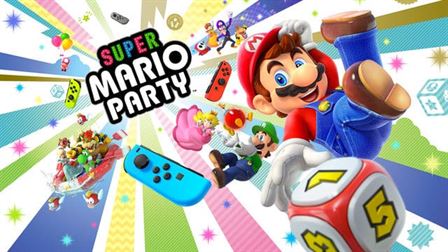With Nintendo set to hold a presentation sometime this week to discuss its future plans for the Nintendo Switch, most fans are looking forward to hearing more news about the highly anticipated “Super Smash Bros. Ultimate.” The game, which is planned for a Dec. 7 release, is expected to be an absolute juggernaut when it launches, just as previous entries in the “Super Smash Bros.” series have been before. It is undoubtedly one of the most popular titles in all of the gaming industry.
But then there is “Super Mario Party,” which can also expected to be showcased somewhat during the presentation and is set to release on Oct. 5. It is the 11th installment in the “Mario Party” series and one that I encourage others to pay more attention to.
You see, “Mario Party” is not just a game, it is an entire way of life — a game series so blatantly absurd and nonsensical that it is a far superior multiplayer experience than the “Super Smash Bros.” franchise.
While that may sound like a controversial opinion contrived for the purpose of simply agitating the devoted followers of the previously mentioned fighting game franchise, there is actually some method to my madness.
First and foremost, multiplayer gaming experiences are primarily intended to be fun. Not to say that “Super Smash Bros.” is incapable of this, but “Mario Party” is a series more predicated on bringing people together. It is literally advertised as a party; the party that is headlined by the iconic mustachioed hero Mario. His magnanimous personality can be seen fully on display and it is contagious.
The series boasts a more easygoing approach, which lends credence to how much more of an approachable experience it is. To put it simply, “Super Smash Bros.” is about conflict and directly humiliating your opponent through violent means, while “Mario Party” is about joining together for a period of tremendous randomness and purity.
That does not mean “Mario Party” can not be competitive, though. The main difference, however, is that the unpredictable nature of the series makes the outcome, and the means by which you get there, far more entertaining.
Nobody likes to admit it, but after you play “Super Smash Bros.” enough times with your friends, there is almost always a disparity in skill level that becomes apparent. Once that happens, there are not many opportunities for upsets. Sure, it is still fun to play and is practically flawless in terms of fighting gameplay, but is it really that fun for your friend that comes in last place every time? No, not at all, even though that poor soul would probably never admit it for fear of being ostracized from the “fight club.”
In “Mario Party,” anyone can win at any time and in any number of ridiculous ways. In my experiences, there have been winners that have won because of their last turn going the perfect way. You just never know what could happen, and nobody is ever safe from having the lead stolen right from underneath them. While some would fault the game for its often arbitrary style, the simple fact is that the game is fun and is an especially satisfying activity with people who have a good sense of humor.
“Mario Party” is a franchise littered with absurdity. There are silly mini games that each offer something different, a diverse collection of rules and objectives, and a general aesthetic that is more inclusive than intimidating. It is profoundly chaotic and offers something for everyone whether you are a casual gamer that only plays “Candy Crush” or a hardcore savant that can beat the old “Castlevania” games without breaking a sweat.
No matter what, every game of “Mario Party” will make for another great story.



